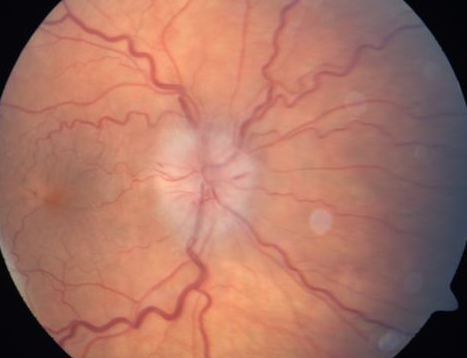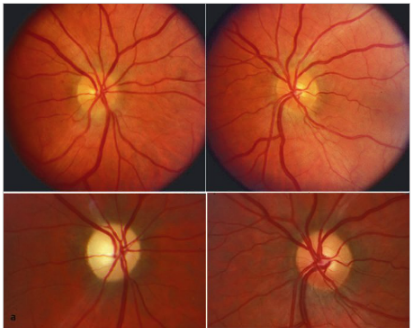Questions:
1. What is the most common cause of compressive optic neuropathy?
2. Are pilocytic astrocytoma and optic nerve glioma more common in adults or children?
3. Do anterior or large intraorbital lesions often produce optic disc swelling?
4. Is there usually pain on eye movement with compressive optic neuropathy?
5. Is cupping uncommon in chronic compressive optic neuropathy?
6. What neuroimaging studies should be obtained for suspected compressive optic neuropathy?
7. Are episodes of transient monocular visual loss common in optic nerve sheath meningiomas?
 1
1
Archives for October 2017
Neuro-ophthalmology Questions of the Week: Compressive and Infiltrative Optic Neuropathies
Neuro-ophthalmology Question of the Week: Arteritic Anterior and Posterior Ischemic Optic Neuropathy
Question:
Which of the following are correct for giant cell arteritis?
1. Visual loss may be preceded by recurrent episodes of transient monocular visual loss.
2. Visual loss may be preceded by recurrent episodes of transient diplopia.
3. AION is its most common ophthalmic manifestation.
4. It is the most common cause of PION.

Neuro-ophthalmology Questions of the Week: Posterior Ischemic Optic Neuropathy
Questions:
1. What is the typical visual field defect in nonarteritic PION?
2. Is disc swelling usually seen with nonarteritic PION?
3. What does PION not associated with surgery in patients older than age 50 generally indicate?
4. What should be ruled-out in non-operative PION in patients under 50?
 1
1
Neuro-ophthalmology Question of the Week-Optic Neuropathies
Question:
Which of the following statements are correct?
1. Anterior ischemic optic neuropathies are considered the equivalent of a “stroke of the optic nerve”.
2. The causes and mechanisms of anterior ischemic optic neuropathies and stroke are different.
3. The workup of a patient with an ischemic optic neuropathy is not the same as that for patients with retinal or cerebral infarction.
4. The clinician’s primary role in ischemic optic neuropathies is to exclude giant cell arteritis, control vascular risk factors, treat anemia, and prevent hypotension (e.g., in the setting of dialysis).
5. Anterior ischemic optic neuropathies are not associated with ipsilateral internal carotid artery stenosis and embolic AION is extremely rare.
6. Medications, such as amiodarone, may induce an optic neuropathy often indistinguishable from AION.
 1
1